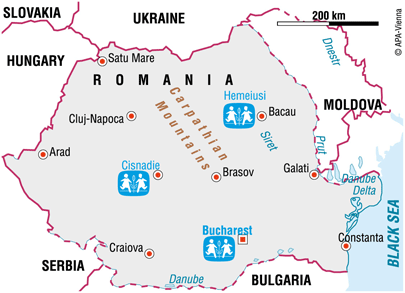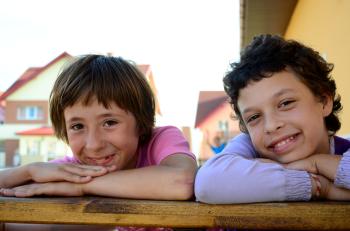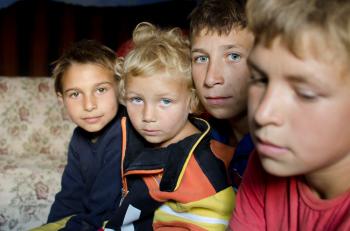
Vi er i Romania
Romania is located at the corssroads of central and south-eastern Europe

The population is 21.4 million (2012 est.), of which the largest minorities are Hungarians – accounting for nearly nine per cent of the population – and Roma – accounting for 2.5 per cent.
People in search of a better life
Although 30 per cent of the population still lives under the nationally-established poverty line, this figure is beginning to improve. The poverty rate is higher in rural areas than in urban ones, and there are big regional differences.
At present the unemployment rate is 7.5 per cent (2013 est.). Agriculture employs 30 per cent of the population, industry 23 per cent and services 47 per cent.
In spite of the improving standard of living, many people are moving abroad. The promise of a better life in another country lures many people into the hands of human trafficking organisations. Since 2008, Romania has become the largest supplier of sex workers to other EU countries.
The health system is facing challenges: not only is it experiencing budget cuts but also corruption and shortage of drugs and staff – the latter form a significant percentage of those emigrating abroad in search of better working conditions. Parents who move abroad often leave their children behind, in most cases in the care of relatives. In 2008 over 96,000 cases were reported.
One per cent of the population has HIV/AIDS. Most of these cases are children who were brought up in the Romanian orphanages in the 1980s. Orphanage staff would inject blood as a food substitute. The syringes were not changed and with some contaminated blood, the disease spread quickly. At present the epidemic is believed to be spreading quickly through drug use and sexual transmissions – the most vulnerable groups are sex workers, street children and homeless adults and those addicted to heroin.
Children are in need of protection

There are just under four million children under the age of 18 in Romania. According to the United Nations about 32,000 children under the age of 14 are involved in child labour.
The children of Romania have been affected by the recent economic, social and political changes. As parents have struggled to find employment, there has been an increase in poverty. Children living in these families sometimes face precarious situations such as labour exploitation, violence, and domestic violence. Many are ultimately taken into care.
The general cuts in public spending have affected children due to less investment in education and in health provision. The country continues to score low in the international Program for International Student Assessment (PISA). The under-five mortality rate stands at nearly three times the EU average. The funding of services, and their quality, varies according to location. Staff turnover is also a problem in these sectors, partly because of low wages.
Despite planned measures to provide support to families, the percentage of children taken into care has remained the same over the past ten years. Small children – under the age of three – constitute the group who are most taken into care. Children with disabilities are routinely placed in institutions or with foster care; the reintegration into their family is difficult.
SOS Children's Villages in Romania
SOS Children's Villages supports children, young people and their families in three locations in Romania by providing education, training, counselling, health care and community support. As prevention of abandonment and poverty is a high priority of SOS Children's Villages Romania, family-strengthening programmes have been initiated at all three SOS Children's Village locations.
The aim of these programmes is to enable children who are at risk of losing the care of their family to grow up within a caring family environment by supporting families and building their capacity to care for their children. In co-operation with local authorities, assistance systems for vulnerable children and their parents are strengthened within the community. Children whose parents cannot take care of them will find a loving home in one of the SOS families.
Website of SOS Children's Villages Romania
(available in Romanian and English)